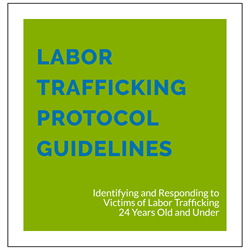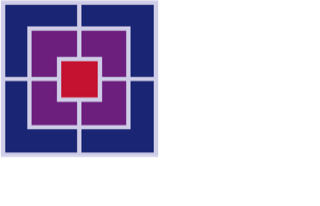Child Welfare Policy Procedure and Protocol Templates
The Commercially Sexually Exploited Children (CSEC) Program (administered by the CDSS) was established in 2014 in response to SB 855 (CH 29, Statutes of 2014) and represents the largest investment by any U.S. state into the development of local responses to serve children who have been sexually exploited , totaling nearly $20 million annually. County Child Welfare Agencies that choose to participate in the CSEC Program are required to develop an interagency protocol and utilize a multidisciplinary team approach to provide prevention and intervention activities, and services to children who are victims, or at risk of becoming victims, of commercial sexual exploitation.
PACT responded to this gap by engaging its original ten-county child-welfare agency peer cohort in shared learning to better understand the dynamics of child labor trafficking. In 2019 – 2020, PACT counties began initial work to expand their CSEC Programs to address child labor trafficking. While still in the beginning stages, this model can serve as an initial roadmap to build capacity to prevent, early identify, and serve labor trafficked children and youth in California who interface with child welfare systems.
Check Out Our PACT-Developed Resources
PACT’s Mini Desk Guide for Social Workers provides a basic understanding of the prevalence and co-occurrence of child labor trafficking with commercial sexual exploitation in California. It features real life scenarios, common red flags to be aware of and recommended resources.
View Resource Development Associate's one page info sheet: the Child Welfare Response to Labor Trafficking for a quick look at recent data, trends, warning signs and real life examples.
Gather a planning team or another group of informed stakeholders to respond to PACT’s Child Labor Trafficking Readiness Questionnaire. The score will reveal a baseline to assist understanding of organizational leadership, culture, and collaborative structures to build on current programming to address child labor trafficking. Then brainstorm the needed action steps by utilizing PACT’s At a Glance Quick Assessment and PACT’s Comprehensive Child Trafficking Action Plan during a follow-up meeting.
View PACT’s Child Labor Trafficking Flow Chart as a template to map a county level child labor trafficking response; identify areas of training or adaptation needed to ensure accurate data collection and partnership with the appropriate multi-disciplinary partners.
View PACT’s Identifying and Responding to Child Labor Trafficking Guide to support the screener, screening team, assigned worker or supervisor for use in reviewing information known about a child who shows signs of labor trafficking. For more in depth information about validated screening tools visit the toolkit page Comprehensive Screening Tools.
Improve identification, services and outcomes for children and youth through collecting accurate data and prevalence regarding child labor trafficking. View PACT’s Quick Guide on Data Entry for Child Labor Trafficking to view how to document cases within the existing Child Welfare Services/Case Management System (CWS/CMS).
Check Out PACT County Examples of Adapted Policies & Templates
Have an example to share? Please email us to add to the Tool-Kit!
Other States Policies & Procedures
Minnesota

The Labor Trafficking Protocol Guidelines (View Here), released on January 31, 2019, are designed to help communities throughout Minnesota identify and respond to victims of labor trafficking, especially youth 24 years old and younger.
The protocol guidelines are based on information collected from over 100 professionals Subject matter experts throughout Minnesota, and reflect the needs of rural, suburban, and urban communities in addressing labor trafficking.
Highlights Include:
- Worksheets and tools to begin crafting a coordinated response (View worksheets only)
- Guidance for screening and identifying victims of labor trafficking;
- An overview of services that victims may need;
- Information on criminal and civil penalties for traffickers;
- Special considerations for minors, foreign nationals, and victims with disabilities; and
- Guidance for key sectors including law enforcement, prosecutors, health care, victim advocates, housing, legal services, and the child welfare system
Florida

No national data exists to summarize states child welfare agencies’ investigations of human trafficking allegations. However, Florida’s child welfare system has recorded far more human trafficking allegations than other states. Since 2013, Florida has used a specific allegation category for labor trafficking. View compiled documents from Florida to support efforts to expand California’s county level work to address child labor trafficking.
Child Labor Trafficking within the US: A First Look at Allegations Investigated by Florida’s Child Welfare Agency, A Report by D eborah A. Gibbs, Sue Aboul-Hosn & Marianne N. Kluckman (2019).
Findings suggest opportunities for research and practice to address labor trafficking of children, and the need for continued efforts to identify its occurrence in order to better prevent and alleviate victimization.
Analysis of data revealed child labor trafficking:
- Comprised 9% of all human trafficking investigations;
- Were more likely than sex trafficking allegations to be verified following investigation;
- Children with labor trafficking allegations were younger;
- Nine times more likely to be male;
